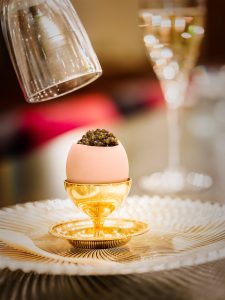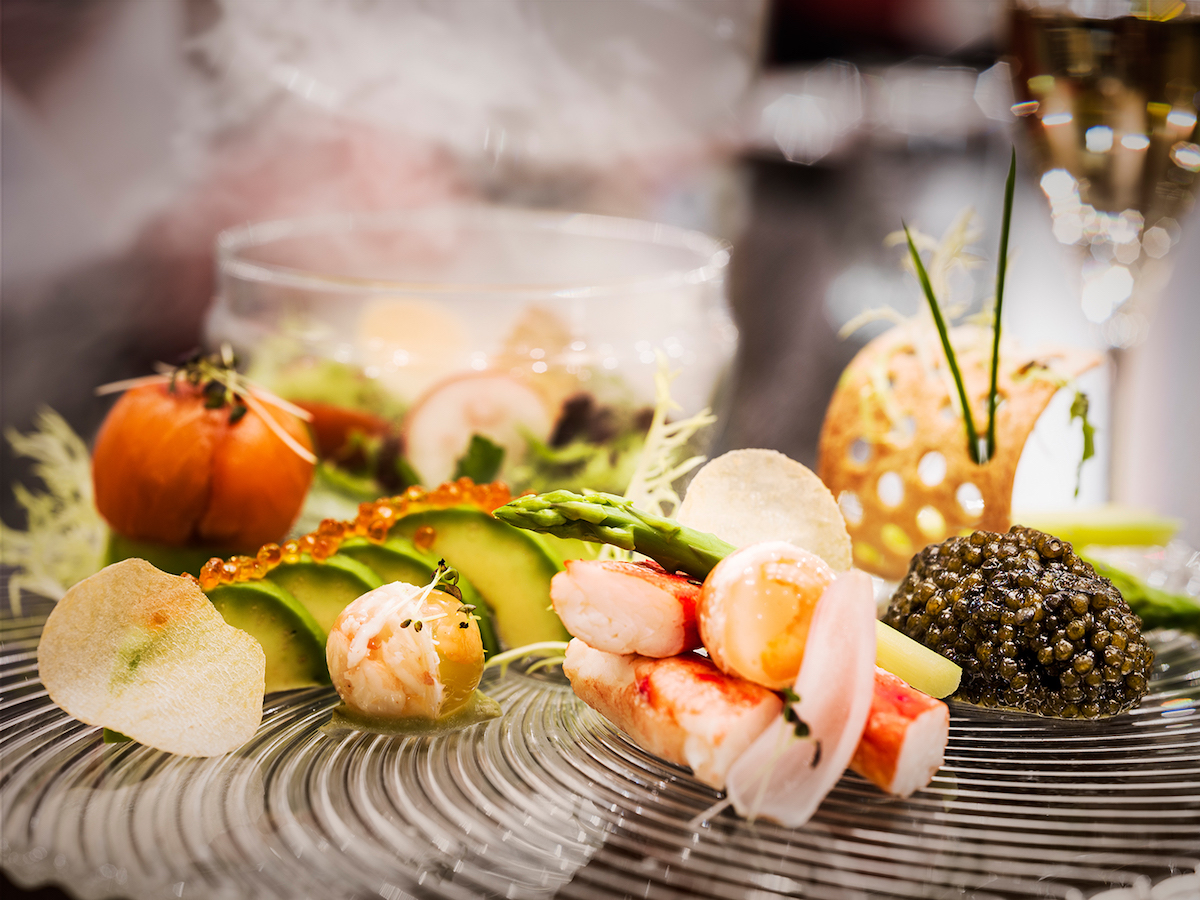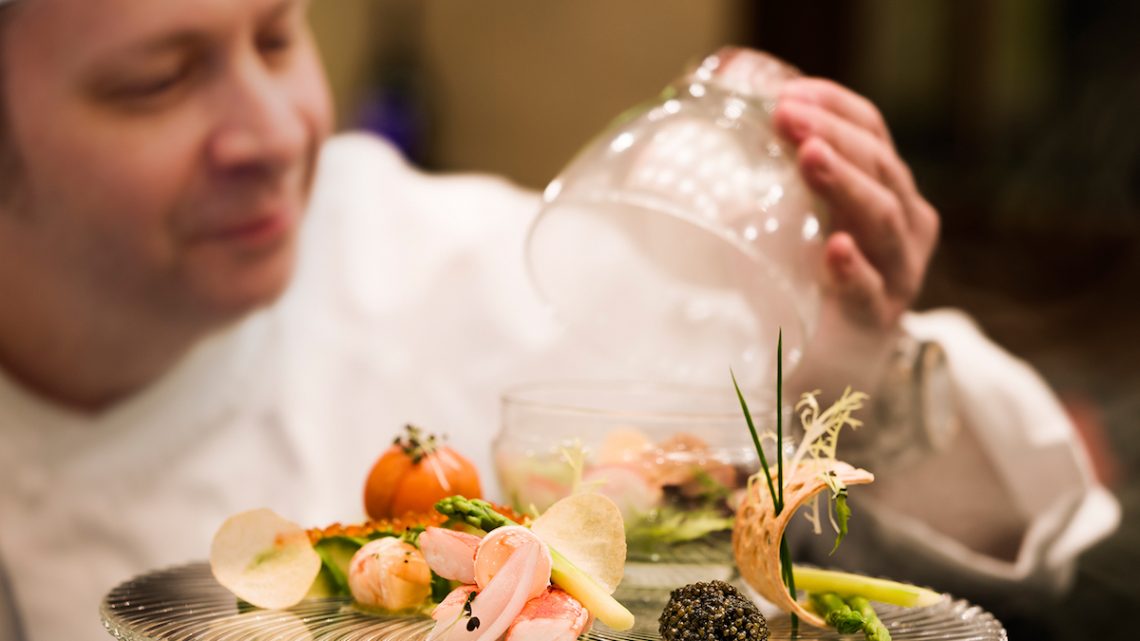During a trip to beautiful Saint Petersburg, Russia, I stayed at the historical and beautiful Hotel Belmond. Not only is this former palace a wonder of Russian architecture, it is also one of the finest hotels in Europe. And as a destination spot for elite travelers with fine tastes, it goes without saying that the Belmond has its own special history with Russian caviars.

CAVIAR AT THE BELMOND GRAND HOTEL EUROPE
As each experience in our travels has to be unique, it would have been remiss of me to not indulge in a bit of one of Russia’s most famous luxury exports. So I decided to organize a private tasting on a Sunday evening in a secluded dining hall at the hotel. There I was giving a very complete lesson on the various qualities of caviar and even received tips on how best to consume them.
CAVIAR TYPES
In my caviar experience, I opted for a selection of four that included both beluga and oscietra (also spelled ossetra) from the sturgeon family; then salmon and finally pike. Obviously each varies in price, quality and availability.
THE IMPERIAL TRIO OF CAVIAR
Sevruga, beluga and oscietra are all produced by the sturgeon and form what is known as the “imperial trio”. Of them, beluga is the most expensive, followed by oscietra, which can cost about half the price as beluga and finally sevruga.
HOW BEST TO APPRECIATE YOUR CAVIAR EXPERIENCE
Hotel Belmond recommends the traditional method for best consummation. In this you place a dab of the caviar on the open fold of the hand, just between the thumb and the index finger until it reaches room temperature. It also recommends starting your foray into the world of caviars!
At Belmont potatoes, egg white, egg yolk and sour cream with different blinis. This latter is used to soften the saltiness that often accompanies the caviar.

CAVIAR AT THE BELMOND GRAND HOTEL EUROPE
TIPS & FACTS ABOUT CAVIAR BELOW:
- STURGEON FAMILY/Black Caviar
- The sturgeon family has 16 different kinds of fish, with their difference being determined by the region of birth of the fish, the size of the fish.
- The beluga sturgeon produces caviar only once it reaches maturity at age 17.
- Caviar is 20% of body weight of the fish.
- This fish was born about 2.5 million years ago, has had almost no evolution since and can live for 100 years.
- It lives in the sea but must swim upstream in order to produce the caviar.
- Reaching lengths of 4.5 meters, it is the biggest river fish in the world.
- The biggest sturgeon was found approximately 100 years ago, weighed more than 1000 kilos and had a spellbinding 200 kilograms of caviar.
- In winter, it can freeze in the river and then revive in the spring.
- Only the sturgeon family can produce the real black caviar.
- Beluga is the king of the sturgeon family. It is the most interesting from a gastronomical point of view and leaves a velvety sensation once on the palette. (Costs about 80 euros for 10 grams of Beluga.)
- Oscietra (ossetra) is smaller in size. 1 – 1.5 meters. Stars to produce at 12 years of age. It costs half the price of Beluga. (FYI: In the USA, one cannot sell Beluga.)
- Sevruga: The smallest of the sturgeon family. The taste is very soft and mild. Rich flavor such as a walnut, or seaweed or fishy aftertaste. The color is gray. Its textures are very fatty, rich.
- Malosol is a non-pasteurized caviar. It has a salty taste and has a natural preserving ingredient can prolong its shelf life as fresh caviar. However once open, it may only be maintained a few days.
- PIKE/White Caviar
- It has no unpleasant aftertaste.
- Fish comes from the Caspian Sea
- SALMON/Red Caviar
- Salmon produces red caviar.
- Salmon matures at 2 years of age and begins producing caviar yearly.
- The flavor of red caviar is very strong, fishy and can be too powerful for some tastes.

CAVIAR AT THE BELMOND GRAND HOTEL EUROPE
Special thanks to Irina Khlopova and the St. Petersburg Fashion Week for their generous aid in helping to bring this article to life.








